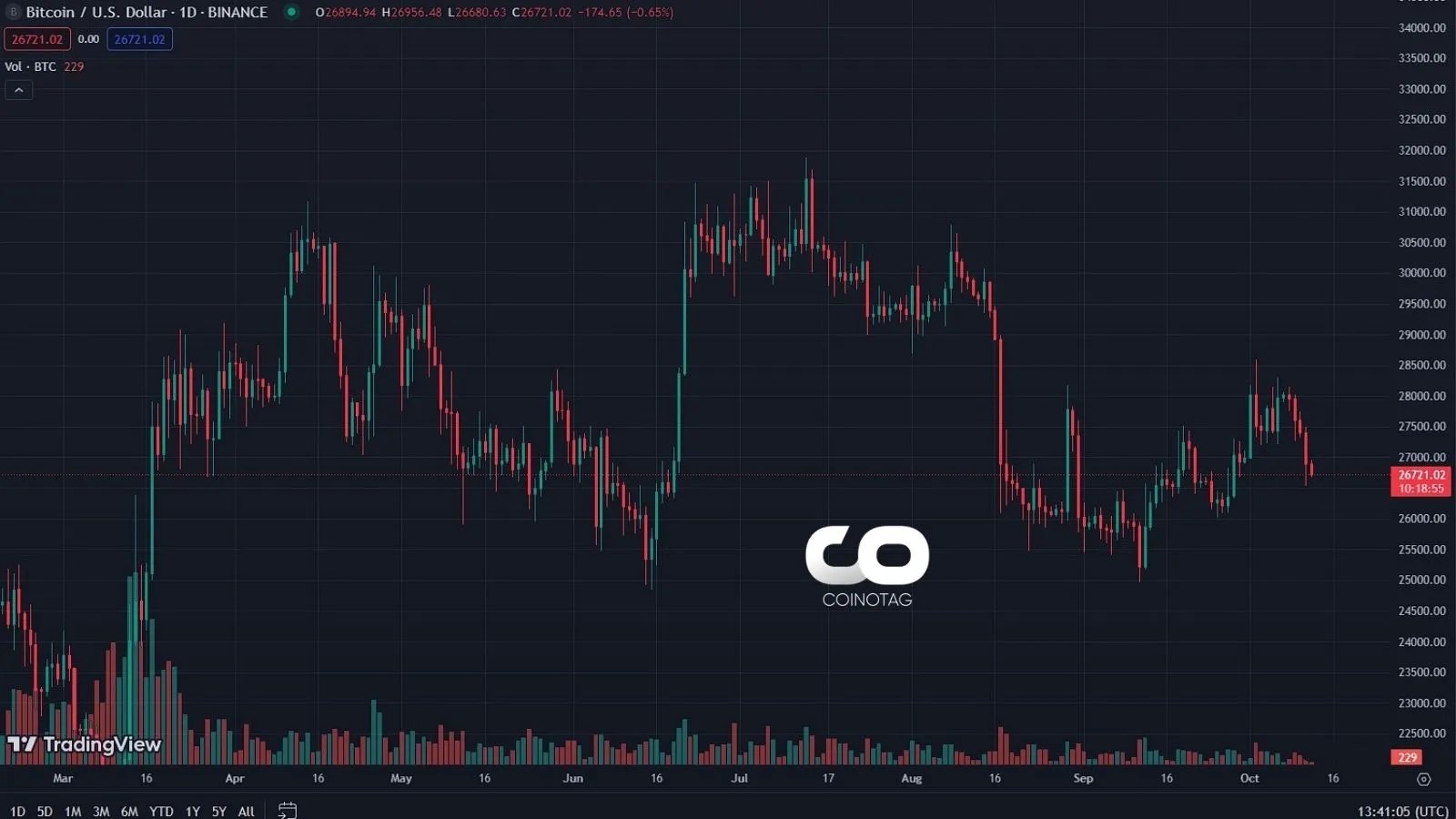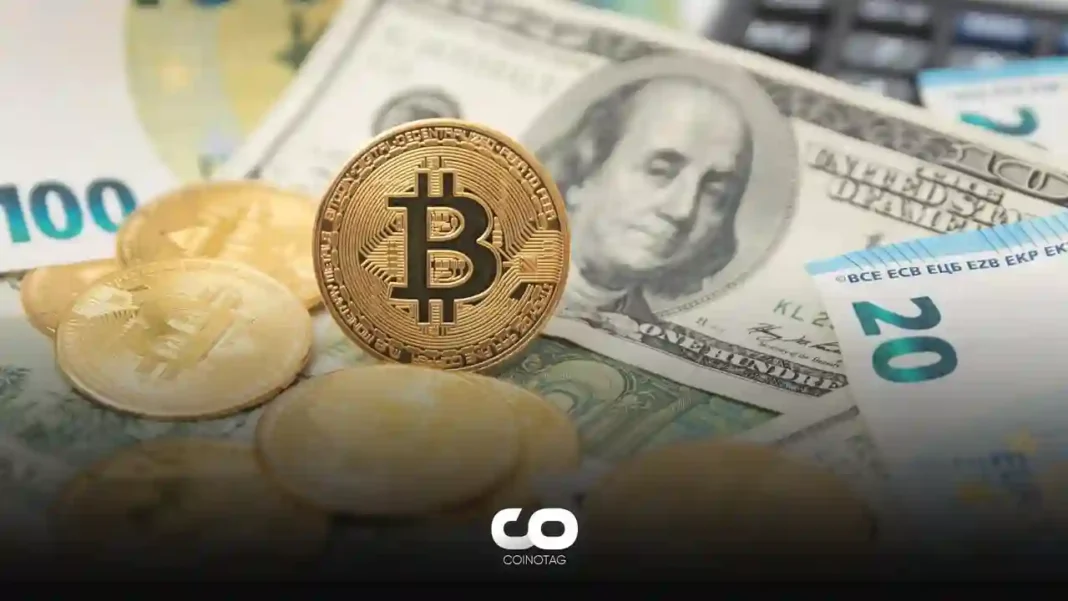| COINOTAG recommends • Exchange signup |
| 💹 Trade with pro tools |
| Fast execution, robust charts, clean risk controls. |
| 👉 Open account → |
| COINOTAG recommends • Exchange signup |
| 🚀 Smooth orders, clear control |
| Advanced order types and market depth in one view. |
| 👉 Create account → |
| COINOTAG recommends • Exchange signup |
| 📈 Clarity in volatile markets |
| Plan entries & exits, manage positions with discipline. |
| 👉 Sign up → |
| COINOTAG recommends • Exchange signup |
| ⚡ Speed, depth, reliability |
| Execute confidently when timing matters. |
| 👉 Open account → |
| COINOTAG recommends • Exchange signup |
| 🧭 A focused workflow for traders |
| Alerts, watchlists, and a repeatable process. |
| 👉 Get started → |
| COINOTAG recommends • Exchange signup |
| ✅ Data‑driven decisions |
| Focus on process—not noise. |
| 👉 Sign up → |
- Bitcoin and the broader crypto market experience a dip following the U.S. CPI report.
- The Consumer Price Index (CPI) suggests that while prices increase, underlying inflation cools.
- Experts debate the implications of these figures on the future of cryptocurrencies.
Amid U.S. inflation metrics showing stabilization, Bitcoin and the wider crypto landscape face fluctuations. Is a new financial dynamic unfolding?
The Latest U.S. CPI Report Unveils
The Consumer Price Index (CPI), a primary measure of price fluctuations for consumer products, indicated a drop today. This report suggests goods and services prices surpassed estimates. However, the underlying inflation rate appears to be decelerating. Data from the Bureau of Labor Statistics (BLS) highlighted a 0.4% increase in CPI for the last month, contrasting the 0.6% spike in August—the most significant growth over 14 months.
Crypto’s Reaction: Bitcoin Leads the Tumble

As the U.S. inflation narrative unfolds, Bitcoin’s value mirrors the tension, plummeting 1.3% in a day to trade at $26,812. This 3.3% decline over the week drags the most prominent cryptocurrency by market cap into the spotlight. Ethereum, the market’s second titan, hasn’t remained immune either, experiencing a 1.5% daily drop and marking its value at $1,549.
| COINOTAG recommends • Professional traders group |
| 💎 Join a professional trading community |
| Work with senior traders, research‑backed setups, and risk‑first frameworks. |
| 👉 Join the group → |
| COINOTAG recommends • Professional traders group |
| 📊 Transparent performance, real process |
| Spot strategies with documented months of triple‑digit runs during strong trends; futures plans use defined R:R and sizing. |
| 👉 Get access → |
| COINOTAG recommends • Professional traders group |
| 🧭 Research → Plan → Execute |
| Daily levels, watchlists, and post‑trade reviews to build consistency. |
| 👉 Join now → |
| COINOTAG recommends • Professional traders group |
| 🛡️ Risk comes first |
| Sizing methods, invalidation rules, and R‑multiples baked into every plan. |
| 👉 Start today → |
| COINOTAG recommends • Professional traders group |
| 🧠 Learn the “why” behind each trade |
| Live breakdowns, playbooks, and framework‑first education. |
| 👉 Join the group → |
| COINOTAG recommends • Professional traders group |
| 🚀 Insider • APEX • INNER CIRCLE |
| Choose the depth you need—tools, coaching, and member rooms. |
| 👉 Explore tiers → |
Experts Weigh In: Inflation, Crypto, and the Bigger Picture
John Haar, from Swan Bitcoin, suggests that investors had already factored in the anticipated inflation sticking around. The expectation of the Federal Reserve maintaining rates in their upcoming November 1 meeting further reinforces this sentiment. CoinShares’ James Butterfill notes external factors, such as rising airline fares and oil prices, may influence core inflation indirectly. Kaiko’s Dessislava Aubert emphasized the expected volatility in the crypto market due to liquidity and volumes being at multi-year lows. However, she hints at a more subdued market reaction to CPI figures, considering the current perception of the U.S. central bank’s stance on rate hikes.
Bitcoin’s Evolution: From Risky Bet to Safe Haven?
The CPI’s function as an inflation calculator, tracking items like gasoline and clothing, has traditionally seen investors offload volatile “risk assets” like Bitcoin when high. This especially rings true when the Federal Reserve opts for aggressive interest rate increments to curb inflation, dimming the allure of such assets. Yet, a paradigm shift seems underway. A growing cohort of investors now classifies Bitcoin alongside safe-haven assets, akin to gold. This sentiment is bolstered by experts suggesting that the worst of inflation might be in the rearview, making CPI’s influence on crypto increasingly diminished.
| COINOTAG recommends • Exchange signup |
| 📈 Clear interface, precise orders |
| Sharp entries & exits with actionable alerts. |
| 👉 Create free account → |
| COINOTAG recommends • Exchange signup |
| 🧠 Smarter tools. Better decisions. |
| Depth analytics and risk features in one view. |
| 👉 Sign up → |
| COINOTAG recommends • Exchange signup |
| 🎯 Take control of entries & exits |
| Set alerts, define stops, execute consistently. |
| 👉 Open account → |
| COINOTAG recommends • Exchange signup |
| 🛠️ From idea to execution |
| Turn setups into plans with practical order types. |
| 👉 Join now → |
| COINOTAG recommends • Exchange signup |
| 📋 Trade your plan |
| Watchlists and routing that support focus. |
| 👉 Get started → |
| COINOTAG recommends • Exchange signup |
| 📊 Precision without the noise |
| Data‑first workflows for active traders. |
| 👉 Sign up → |
Conclusion
The interplay between U.S. inflation rates and the crypto market’s response adds another layer to the multifaceted financial tapestry. As Bitcoin and other cryptocurrencies navigate these economic waters, their evolving perception—from risky ventures to potential safe havens—offers a glimpse into a shifting financial landscape. With the Federal Reserve unlikely to adjust interest rates next month, all eyes remain on the crypto market’s next move.
| COINOTAG recommends • Members‑only research |
| 📌 Curated setups, clearly explained |
| Entry, invalidation, targets, and R:R defined before execution. |
| 👉 Get access → |
| COINOTAG recommends • Members‑only research |
| 🧠 Data‑led decision making |
| Technical + flow + context synthesized into actionable plans. |
| 👉 Join now → |
| COINOTAG recommends • Members‑only research |
| 🧱 Consistency over hype |
| Repeatable rules, realistic expectations, and a calmer mindset. |
| 👉 Get access → |
| COINOTAG recommends • Members‑only research |
| 🕒 Patience is an edge |
| Wait for confirmation and manage risk with checklists. |
| 👉 Join now → |
| COINOTAG recommends • Members‑only research |
| 💼 Professional mentorship |
| Guidance from seasoned traders and structured feedback loops. |
| 👉 Get access → |
| COINOTAG recommends • Members‑only research |
| 🧮 Track • Review • Improve |
| Documented PnL tracking and post‑mortems to accelerate learning. |
| 👉 Join now → |








